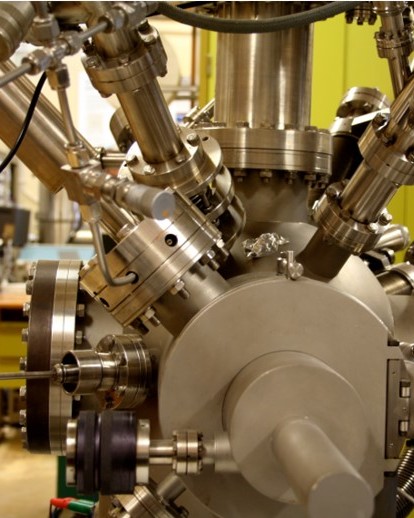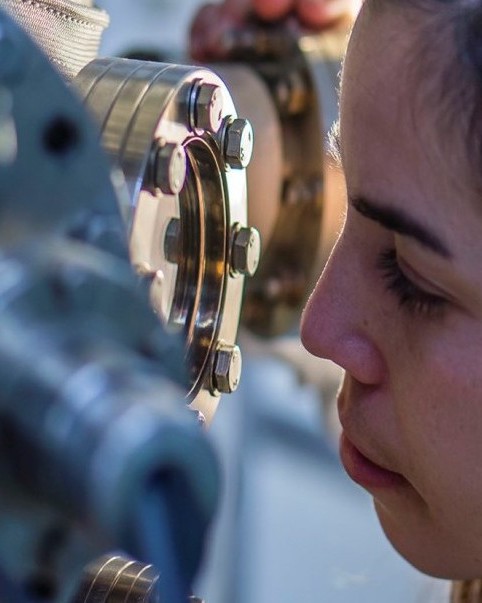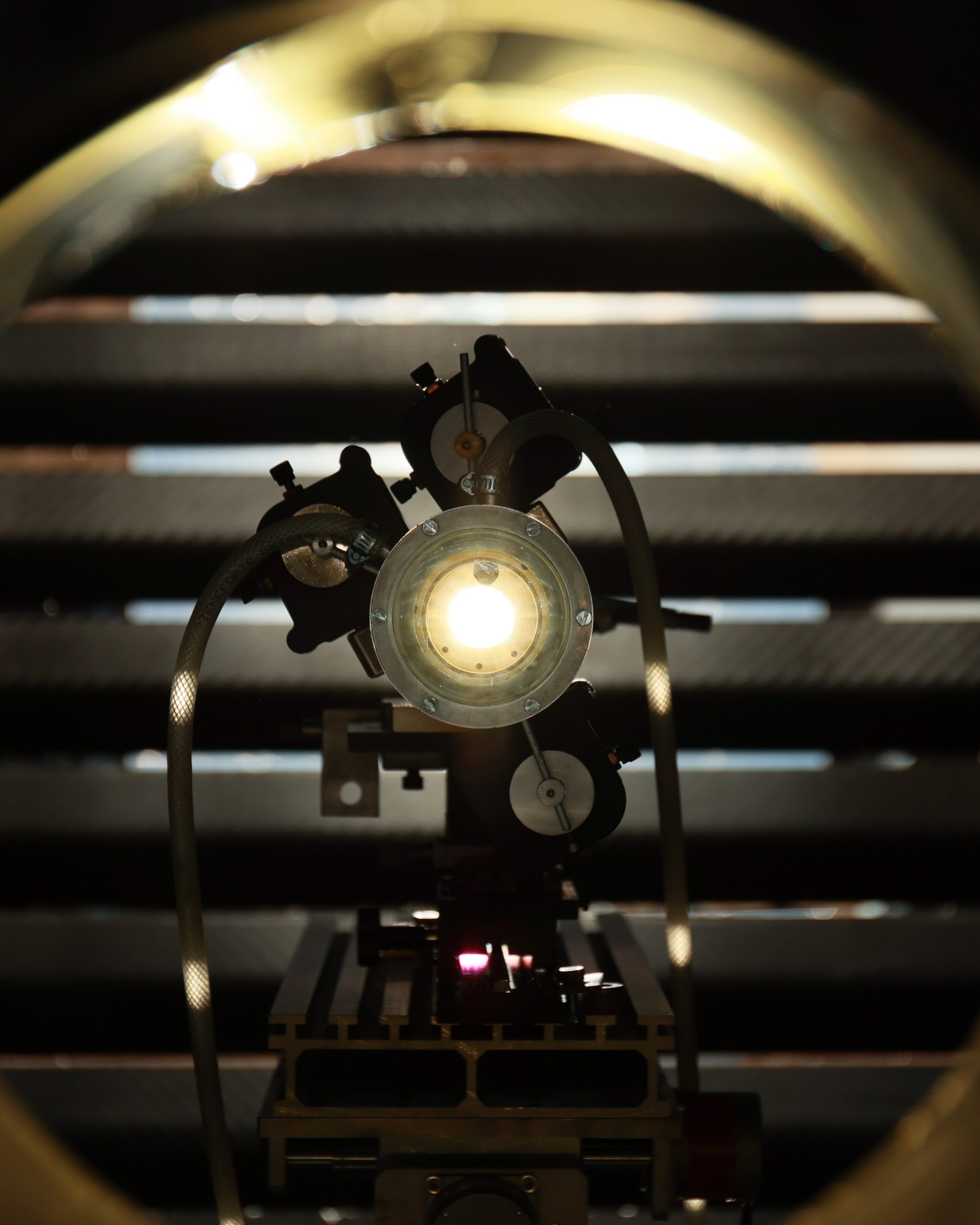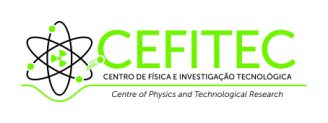Research Groups
Surface Science and Vacuum Technology

Early in the 90s, this group started to emerge as a branch of the Centre of Molecular Physics of the Universities of Lisbon. A new lab was equipped with modern surface analysis techniques pursuing ion interactions with surfaces in keV energy region, including sputtering, scattering and ionization.
The large background in high and ultra-high vacuum led to the creation of a new lab targeting an approach to the national industry via the calibration of vacuum gauges and consultancy. METROVAC was officially recognized as an accredited calibration laboratory in 2002. Soon this laboratory broadened its accreditation scope to include the metrology of ultra-low flows, including reference leaks and leak detection. These new skills gave the motivation to start a new area of research studying the transport of gases and vapors through cork and desorption of contaminants. Achievements on this subject quickly attracted the attention of cork stopper manufacturers and fruitful collaborations have started.
Meanwhile, the surface science lab underwent in a collaboration with CERN regarding the study of secondary electron emission from carbon coatings, which are used in the accelerator walls to mitigate the formation of the electron cloud. This cloud is one of the major limitations to increase the beam luminosity in particle accelerators, but also introduces major technological problems in telecommunication satellites and spacecrafts in general. Nowadays the surface science lab has two fully operational XPS (X-Ray Photoelectron Spectroscopy) systems and one Tof-SIMS (Time-of-flight Secondary Ion Mass Spectrometer. In recent years, great experience has been accumulated in the emission of secondary electrons from surfaces and in the chemical characterization of nanostructured surfaces.
Recently the two labs fully merged their capabilities to design a high accuracy ionization gauge where the problems induced by the secondary emission in the ion collector were carefully addressed.
Atomic and Molecular
Collisions

The Atomic and Molecular Collisions Laboratory (LCAM) was established in 2004 with the main purpose to explore the electronic state spectroscopy of aeronomic, plasma processing, interstellar medium and biological relevant molecules by interaction with photons and electrons. LCAM’s unique nature has allowed to comprehensively investigate environmental selected molecules related to global warming and ozone depletion, while modelling photolysis rates and local lifetimes in the Earth’s atmosphere (0-50 km altitude).
At the forefront of worldwide interest in electron induced processes at the molecular level, LCAM assembled a unique gas-phase crossed molecular beam setup to explore electron transfer to biological relevant molecules, e.g. DNA/RNA nucleobases and even nucleosides. Additionally, and given the role of modern tailor-made radiation induced protocols for cancer treatment, radiosensitizers have been comprehensively investigated in order to provide essential information as to the underlying molecular mechanisms relevant to radiosensitization.
Further to LCAM’s mission and installed technical abilities, new gas-phase experimental setups have been successfully installed to explore the electronic and molecular structure of a diversity of molecules, either through high-resolution electron energy loss and He(I) photoelectron spectroscopies or through implementation of a low-energy electron impact setup for attachment and ionisation studies. Since its foundation, LCAM keeps relevant international partnerships with universities and reference laboratories, at the national and international scenes, with the main purpose to reinforce and bring in contributions of complementary experimental and theoretical techniques essential for its indoors scientific achievements. Also central to our mission is undergraduate and postgraduate advanced training which we have successfully performed by attracting national and international students.
Laser Technology

Laser technology group of CEFITEC was established more than a decade ago to further enhance both solar-to-laser power conversion efficiency and beam quality of the state-of-the-art solid-state lasers. The group holds the world record in solar laser collection efficiency of 41.3 W/m2 and solar-to-laser power conversion efficiency of 4.64%. Achievements were repeatedly featured by Editors of CSP Today, Spotlights on Optics in 2012, Laser Physics in 2013, Laser Focus World in 2013 and 2016, and Journal of Photonics for Energy in 2019 and 2020. A book publishing contract on “Solar-Pumped Lasers” with Springer Nature has also been signed in January 2020. These main achievements have been supported by the solar facility of the Laser Technology group, composed of a solar heliostat and a 1 kW solar furnace (primary solar mirror), a mechanical supporting unit, several solar laser heads and a solar tracker.
The laser technology group has also a strong collaboration with the PROMES-CNRS institute (in France) since 2011, in the framework of nine funded projects by SFERA (Solar Facilities of European Research Area), SFERA-II and SFERA-III programs.
Currently, the laser technology group is seeking for high solar laser performance through the development of alternative prototypes for the simultaneous pumping of several laser crystals with broader absorption
spectrum in the visible region. The goal is to enable the simultaneous emission of multiple renewable beams with enhanced thermal performance and efficiency. The study of innovative solar concentrators to substantial improve the solar energy flux and, consequently, the solar pumping efficiency, has also been an important subject of research. Thanks to the scientific expertise and dedicated facilities of the laser technology group, it is now possible to carry out both advanced solar laser research and postdoctoral, Ph.D., MSc. degree student trainings, essential to ensure its further progress in renewable laser technologies in the next decade.
